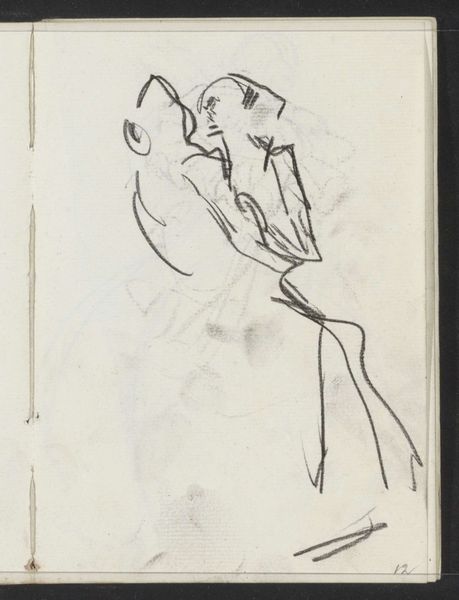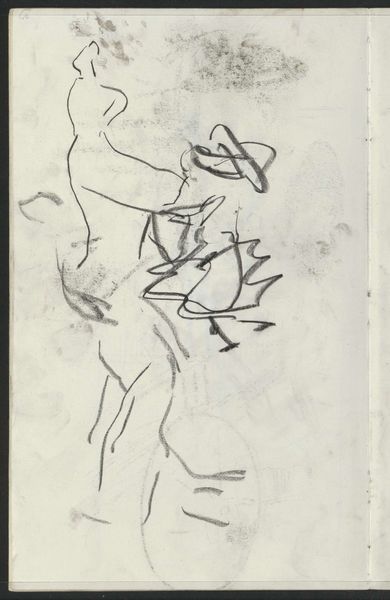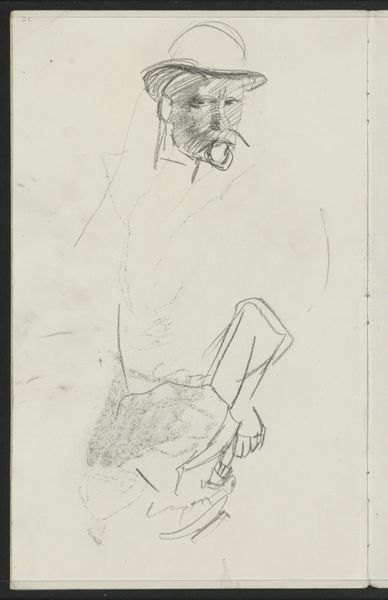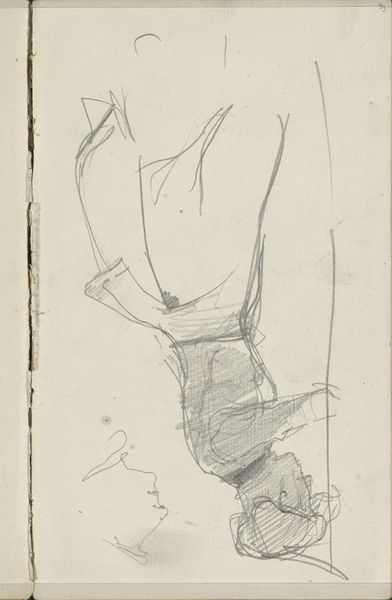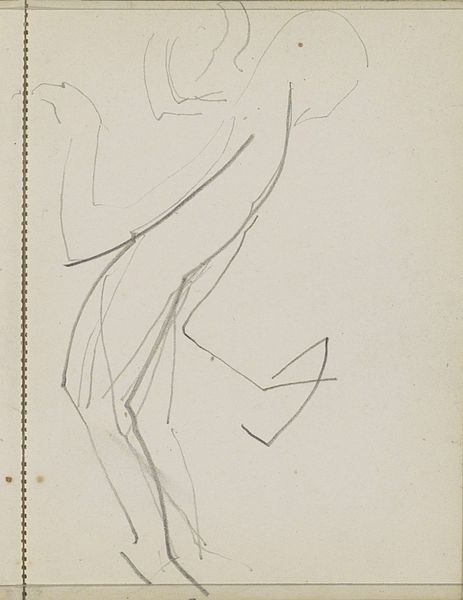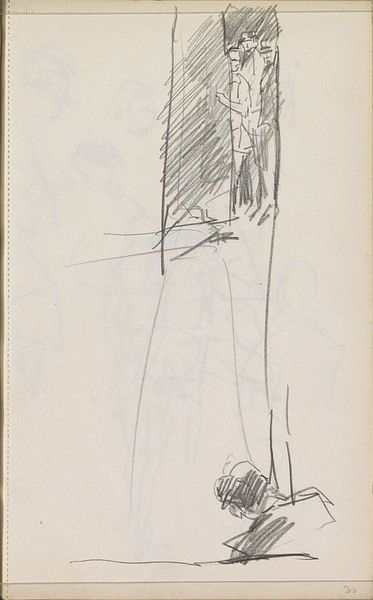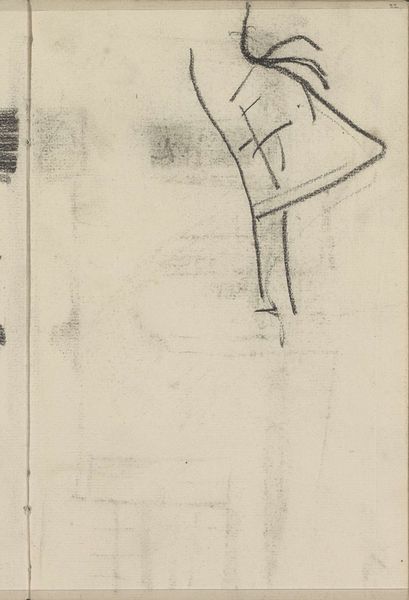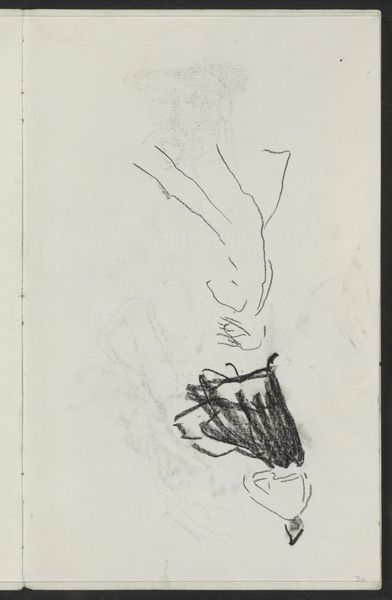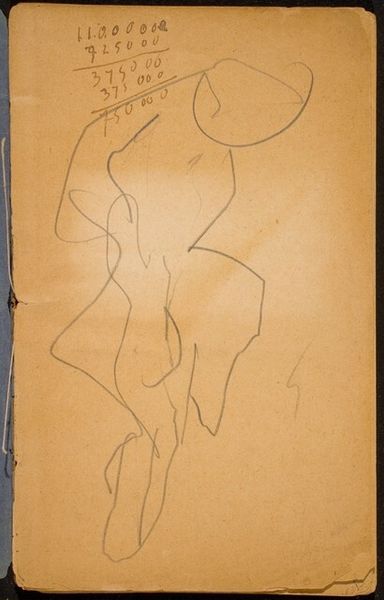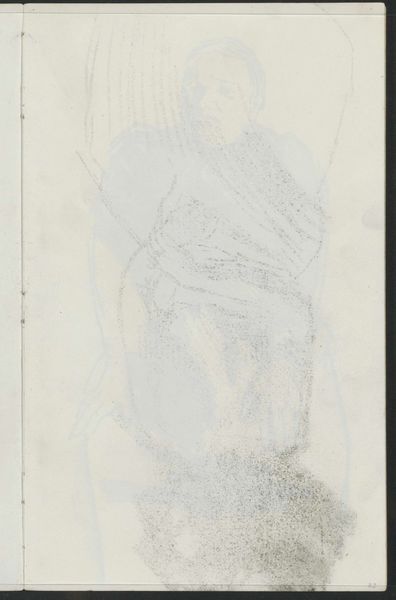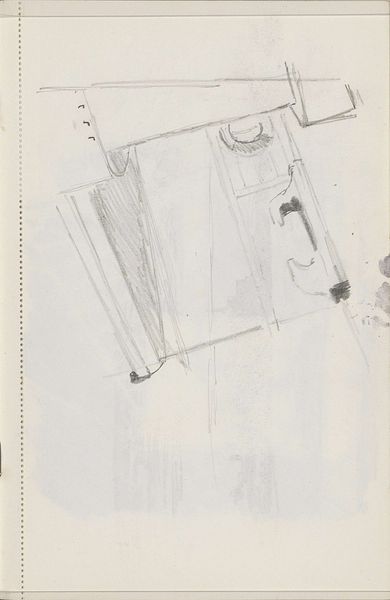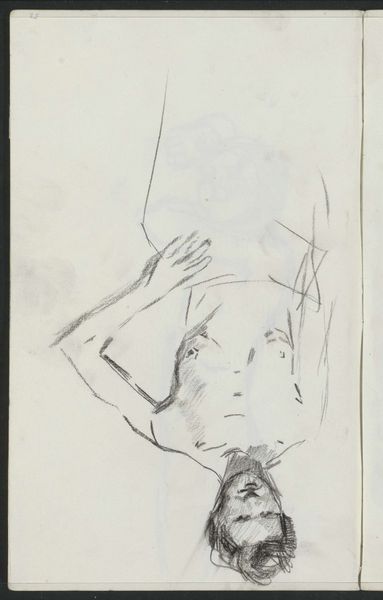
Copyright: Rijks Museum: Open Domain
Curator: This quick sketch is called "Standing Young Woman with Raised Arm," attributed to Isaac Israels, likely made sometime between 1875 and 1934. Editor: It looks like a fleeting moment captured. Very immediate, raw, you can almost feel the movement of the pen on the page. I see the visible paper fibers too, and makes me wonder about the kind of pen he might have been using, what the ink was made from. Curator: Absolutely. Israels was known for his impressionistic style, quickly capturing everyday life. This sketch gives us insight into his artistic process, a peek into his sketchbook. We have to consider the role that sketchbooks like this have in training artists' vision. Editor: Indeed. The speed and looseness also speaks to the changing status of the art object. Away from labored realism toward a quick, almost disposable record. How might Israels have viewed his labour here versus a formal studio portrait destined for the salon? Curator: Precisely! Sketchbooks weren't typically for public consumption then. It's only in retrospect, that the personal touches become public viewing. The rise of interest in artistic processes helps feed an expanded gallery system, with these objects offering new insights into artistic intention. How many sketches like this simply didn't survive and remain inaccessible? Editor: That's a pertinent point about access. What power structures determine how artworks get categorised within museums versus folk art or craft collections? This sketch prompts questions around artistic development versus something as quotidian as clothing manufacture using industrial material versus art supply quality differences across European nations. Curator: Those distinctions do shape not only interpretation but valuation as well, doesn't it? The institutional context defines value as much as the image itself. It is very telling where it finds its place within collections. Editor: Agreed. This simple sketch, seemingly ephemeral, prompts a far wider conversation around artistic creation, social practice and consumption. Curator: A great way to consider how images become more than the ink and paper from which they are constituted.
Comments
No comments
Be the first to comment and join the conversation on the ultimate creative platform.

